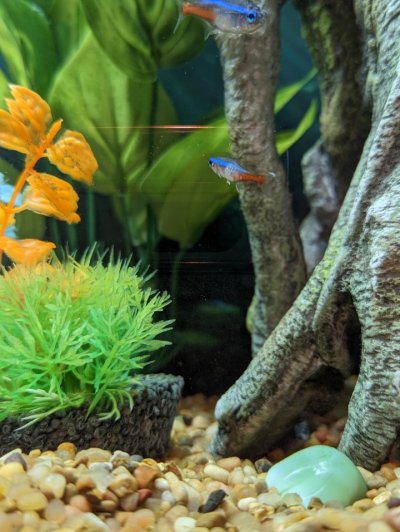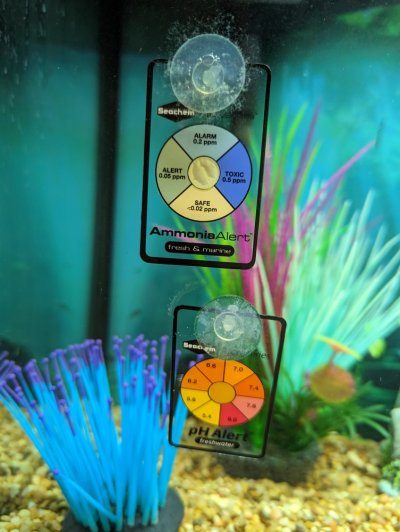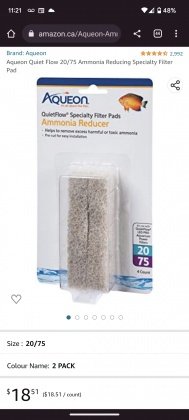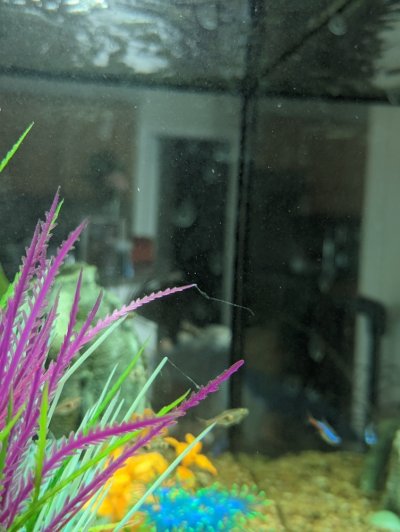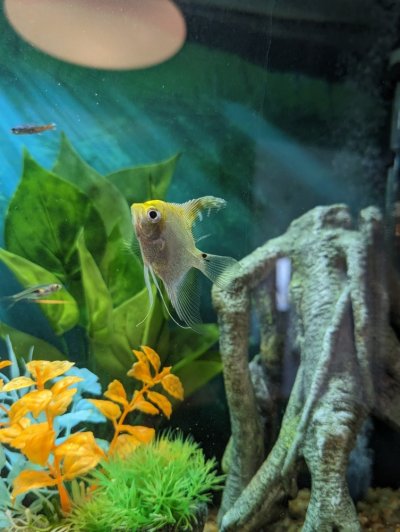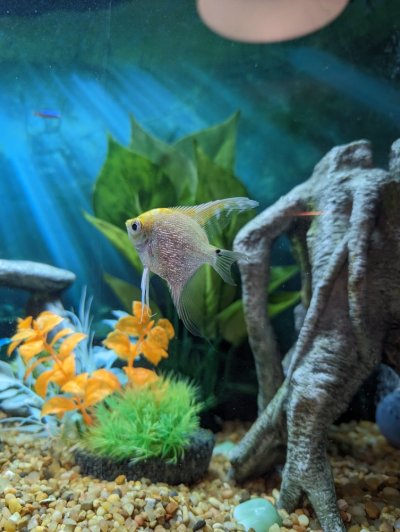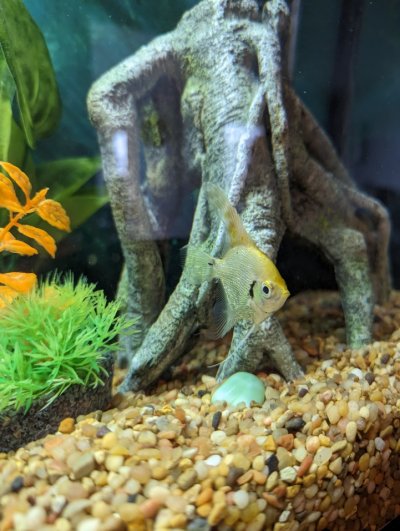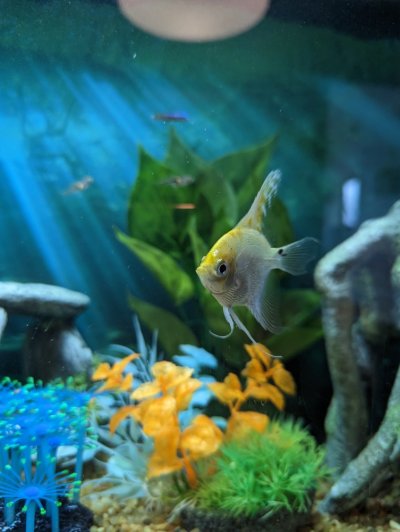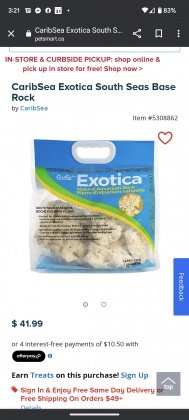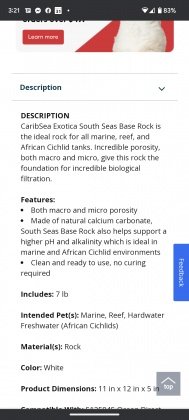Because there is a big difference in the pH between the tap water and aquarium water, do not do big water changes yet because the pH change will stress the fish. When we work out what is going on, we should hopefully get to a point where you can do bigger or more frequent water changes. But at this stage, just stay with small changes.
If I tell you to do big water changes on another thread, just remind me about this bit.

You should try to find out the GH (general hardness) and KH (carbonate hardness) of your tap and aquarium water to try and figure out why the pH is significantly different. It could be due to the small monthly water changes, or something else. Your water company should have a report on its website that tells you what is in the water. If they can't help, take a glass of tap water and a separate glass of aquarium water to your local pet shop and get them to test the GH and KH for you. Write the results down in numbers at the time. You should also ask what the test is measured in (eg: ppm, dGH, or something else), and write that down too. If you have your own GH & KH test kits you can do it yourself but it normally doesn't change much during the year so most people just get a shop to check it for them a couple of times a year.
-------------------
DECHLORINATING WATER WITH PRIME
Why can't you add Prime to your buckets of tap water and mix that up before adding it to the aquarium?
You probably have chloramine in the tap water and this is leaving ammonia in the new water after you use the dechlorinator (Prime). The ammonia is an issue when the pH is above 7.0. Prime is meant to convert the free ammonia into ammonium for about 24 hours, by which time the beneficial filter bacteria should have converted it into nitrite and then nitrate.
-------------------
CLEANING FILTERS
Filters should be cleaned at least once a month. However, do not clean a filter until it is at least 6 weeks old and has finished cycling. Cycling is where the filter develops colonies of beneficial bacteria that convert ammonia into nitrite, and nitrite into nitrate. This normally takes around 4-6 weeks but can take longer depending on temperature and other factors.
To clean the filter media/ materials, simply squeeze them out in a bucket of aquarium water. When the filter pads, sponges and other materials are clean, re-use them in the filter. The bucket of dirty water gets poured on the lawn outside.
The filter case can be washed under tap water.
There should be an impellor (magnet with 3 or 4 plastic blades on one end). The impellor and impellor shaft (stainless steel or white ceramic shaft in middle of impellor) can also be washed under tap water. Be careful removing the impellor and shaft because some filters have a small plastic washer underneath a rubber grommet on each end of the impellor shaft. If you lose the washers or rubber grommets, the motor won't work properly and you will have to buy replacement parts. Put a plug in the sink when you wash these or put them in a sieve for flour and rinse under tap water.
The ceramic shafts can break quite easily so handle with care and try not to drop it. The stainless steel shafts are fine and don't have any problems.
Some motors will have the impellor shaft attached and it doesn't come out. These should have a rubber grommet (and maybe a washer) on top of the impellor. You remove these and you should be able to remove the impellor after by pulling it out.
--------
REPLACING FILTER MEDIA
Do not replace the filter media every month. This is a sales ploy (gimmick) designed to keep you giving money to the manufacturer. If the filter media start to break down, you can replace one piece then and another piece a few months later. But try not to replace the filter media because it houses the good bacteria that helps keep ammonia at 0ppm.
This could be why you are having constant ammonia readings.
The website I am looking at says the filter has a Patented Bio-Holster, removes toxic ammonia and nitrite. If it has this, then that is possibly another problem you are having with the ammonia.
If the filter contains a filter pad with white granules in. The white granules are Zeolite and this stuff adsorbs ammonia and stops the filter bacteria from developing. It only holds so much ammonia and when it's full, you start getting ammonia readings in the water. You don't want Zeolite in a filter. And you don't want their patented Bio-Holster. Find out which part it is and remove it. Sponges are the best filter materials and last for years. They hold gunk, good filter bacteria, and don't need replacing until they start to fall apart (usually a decade or more later).
I am looking at a diagram of the Aqueon Quiet Flow 10 hob style filter online. If you have something like this, you could add some sponge to the filter inside the blue plastic case with slots in. You can buy sponge for a different brand of filter and use a pair of scissors to cut it to fit. Then add the sponge to the current filter media and let them run for a few months. After which time you can chuck the white filter pad and maybe add another bit of sponge.
You can get cylindrical sponges for some brands of internal power filter. These can be fitter over the intake strainer of most external canister filters and add another layer of filtration. This sponge can be taken off each month and washed in a bucket of tank water like the rest of the media.

